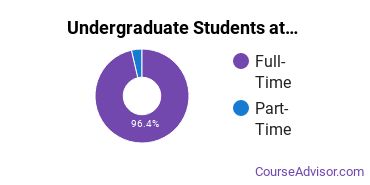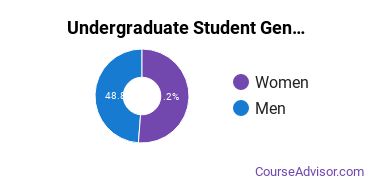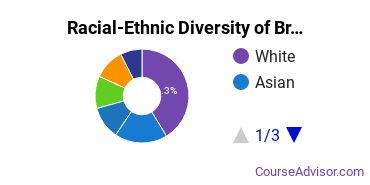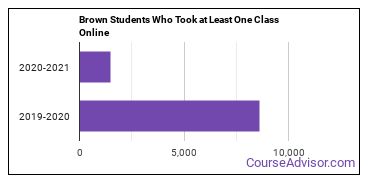Brown University Overview
Located in Providence, Rhode Island, Brown University is a private not-for-profit institution. The location of the school is great for students who enjoy the amenities of city life.
What Is Brown University Known For?
- Students at Brown may have an easier time interacting with their teachers since the student to faculty ratio at the school is 6 to 1.
- Although it may not be available for every major, the doctor's degree is the highest award a student can attain at Brown.
- In 2021-2022, 90% of the faculty were full-time.
- Students who graduate from Brown with a bachelor's degree make about $87,811 a year. That's 115% more than those who graduate from other schools.
- The average Brown student graduates in 4.2 years. That's better than the national average of 4.4 years.
Featured schools near , edit
Where Is Brown University?

Contact details for Brown are given below.
| Contact Details | |
|---|---|
| Address: | One Prospect Street, Providence, RI 02912 |
| Phone: | 401-863-1000 |
| Website: | www.brown.edu |
How Do I Get Into Brown?
You can apply to Brown online at: https://www.commonapp.org/
Admission Requirements for Brown
| Submission | Required? |
|---|---|
| High School GPA | 5 |
| High School Rank | 5 |
| High School Transcript | 1 |
| College Prep Program | 1 |
| Recommendations | 1 |
| SAT or ACT Scores | 5 |
| TOEFL | 5 |
How Hard Is It To Get Into Brown?
Approximately 50% of accepted students are men and 50% are women. The acceptance rate for men is 7%, and the acceptance rate for women is 4%.
Average Test Scores
About 54% of students accepted to Brown submitted their SAT scores. When looking at the 25th through the 75th percentile, SAT Evidence-Based Reading and Writing scores ranged between 730 and 780. Math scores were between 760 and 800.
Can I Afford Brown University?
The net price is calculated by adding tuition, room, board and other costs and subtracting financial aid.
Student Loan Debt
It's not uncommon for college students to take out loans to pay for school. In fact, almost 66% of students nationwide depend at least partially on loans. At Brown, approximately 10% of students took out student loans averaging $11,328 a year. That adds up to $45,312 over four years for those students.
Brown University Undergraduate Student Diversity

There are also 3,347 graduate students at the school.
Gender Diversity
Of the 7,082 full-time undergraduates at Brown, 49% are male and 51% are female.

Racial-Ethnic Diversity
The racial-ethnic breakdown of Brown University students is as follows.

| Race/Ethnicity | Number of Grads |
|---|---|
| Asian | 1,286 |
| Black or African American | 532 |
| Hispanic or Latino | 797 |
| White | 2,924 |
| International Students | 788 |
| Other Races/Ethnicities | 755 |
Geographic Diversity
Rhode Island students aren't the only ones who study at Brown University. At this time, 49 states are represented by the student population at the school.
Over 117 countries are represented at Brown. The most popular countries sending students to the school are China, India, and Canada.
Online Learning at Brown University
The following chart shows how the online learning population at Brown has changed over the last few years.

The following table shows the 1-year growth rate of Brown majors that offer at least one online course. This table only includes majors with positive growth.
| Major | 1-Year Growth Rate |
|---|---|
| Computer & Information Sciences | 13% |
Brown University Undergraduate Concentrations
The table below shows the number of awards for each concentration.
References
*The racial-ethnic minorities count is calculated by taking the total number of students and subtracting white students, international students, and students whose race/ethnicity was unknown. This number is then divided by the total number of students at the school to obtain the racial-ethnic minorities percentage.
- College Factual
- National Center for Education Statistics
- Image Credit: By Ad Meskens under License
More about our data sources and methodologies.
Featured Schools
 Request Info
Request Info
|
Southern New Hampshire University You have goals. Southern New Hampshire University can help you get there. Whether you need a bachelor's degree to get into a career or want a master's degree to move up in your current career, SNHU has an online program for you. Find your degree from over 200 online programs. Learn More > |
